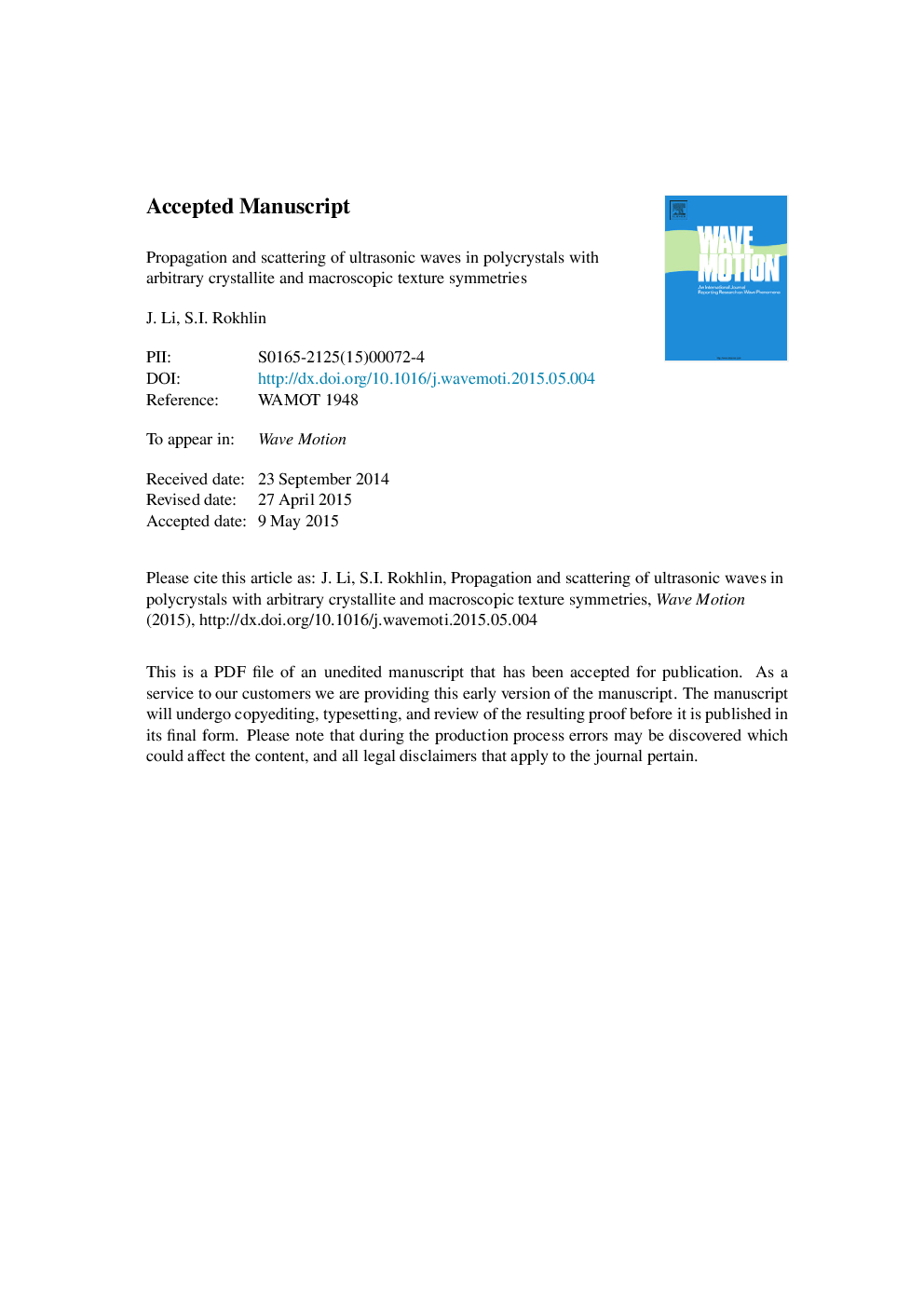| Article ID | Journal | Published Year | Pages | File Type |
|---|---|---|---|---|
| 8256973 | Wave Motion | 2015 | 50 Pages |
Abstract
A general ultrasonic attenuation model for a polycrystal with arbitrary macroscopic texture and triclinic ellipsoidal grains is described with proper accounting for the anisotropic Green's function for the reference medium. The texture and the ellipsoidal grain frames in the model are independent and the wave propagation direction is arbitrary. The attenuation coefficients are obtained in the Born approximation accompanied by the Rayleigh and stochastic asymptotes. The scattering model displays statistical anisotropy due to two independent factors: (1) shape of the oriented grains and (2) preferred crystallographic orientation of the grains leading to macroscopic anisotropy of the homogenized reference medium. The model is applicable to most single phase polycrystalline materials that may occur as a result of thermomechanical manufacturing processes leading to different macrotextures and elongated-shaped grains. It predicts the strength of ultrasonic scattering and its dependence on frequency and propagation direction as a function of grain shape, grain crystallographic symmetry and macroscopic texture parameters and provides the texture-induced dependence of macroscopic ultrasonic velocity on propagation angle. It considers proper wave polarizations due to macroscopic anisotropy and scattering-induced transformations of waves with different polarizations. Competing effects of grain shape and texture on the attenuation are observed. In contrast to the macroscopically isotropic case, where in the stochastic regime the attenuation is highest in the direction of the longest ellipsoidal axis of the grain, the wave attenuation in the elongation direction may be suppressed or amplified by the texture with different effects on the quasilongitudinal and quasitransverse waves. The frequency behavior is also interestingly affected by texture: a hump in the total attenuation coefficient is found for the fast quasitransverse wave which is purely the result of macroscopic anisotropy and the existence of two quasitransverse waves; this hump is not observed in the macroscopically isotropic case. Striking differences of the texture effect on the directional dependences of the attenuation coefficients are found at low versus high frequencies.
Related Topics
Physical Sciences and Engineering
Earth and Planetary Sciences
Geology
Authors
J. Li, S.I. Rokhlin,
